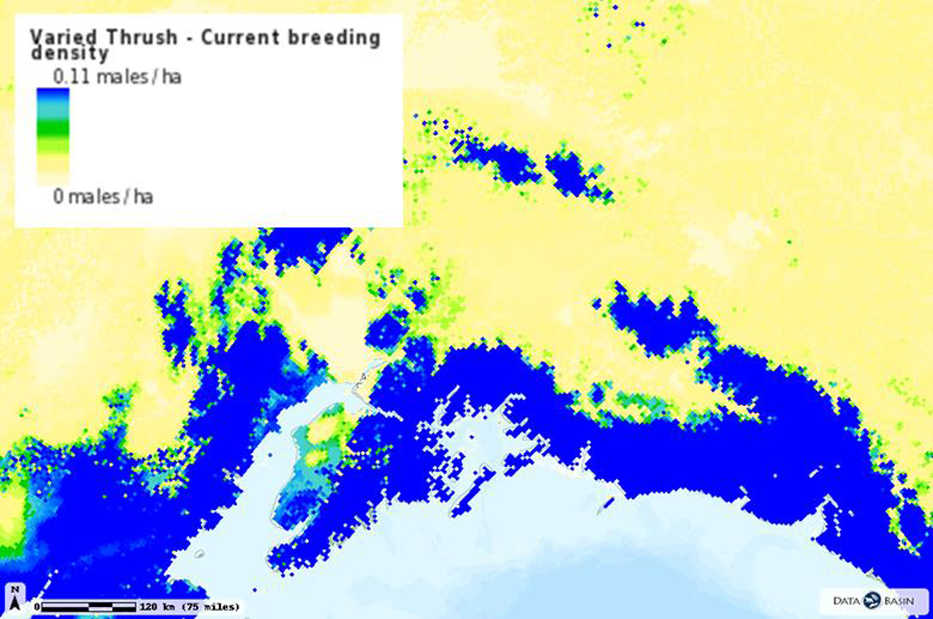Fall is in the air. Last week, I took a quick walk through the woods. I watched golden leaves sail to the ground. A Varied Thrush popped onto a leafless branch in front of me while a small flock of these birds moved along the ground eating berries. I relished the good views.
Varied Thrush are hard to get a look at in the summer. They nest in shaded conifer forests with thick tree and shrub cover. Their distinct song sounds like a single, drawn out note played on a flute. This song carries through the forest, announcing they are present yet invisible. This shy behavior has made them difficult for biologists to study.
If you get a glimpse, they are quite striking. They have black backs in contrast to an orange underside. A black band cuts across the orange chest and an orange brow line cuts through the black. Orange also peppers the wings. They are similar in size to the American Robin, but robins have no orange on the head or wings and lack the breast band.
Varied Thrush breed mainly in the boreal and maritime forests of Alaska, Yukon, and British Columbia. The densities of breeding Varied Thrush are highest along the coast. The males sing to attract females and defend their territory.
Female Varied Thrush build nests in the understory of mature forest. Females seem to like to return to the same neighborhood and often build in an area surrounded by old nests. They weave twigs into an open cup that is lined and draped with moss and finally lined with fine grass or soft dead leaves. They lay 1-6 pale blue eggs. Both parents feed the hatchlings, and later the fledglings, insects that they forage off the ground.
The flock I observed was a mix of this year’s fledglings and adults. As the berries ripen, Varied Thrush shift their diet from insects to berries. A few hardy birds winter in the coastal rainforest found from Kodiak down to southeast Alaska. However, most of the Varied Thrush move further south to wet forests in Washington, Oregon, and Northern California.
The transition from summer to winter is always bittersweet for me. A nice view of the Varied Thrush was at least minor consolation.
Dr. Dawn Robin Magness is a landscape ecologist and Fish & Wildlife Biologist at the Kenai National Wildlife Refuge. Find more information at http://www.fws.gov/refuge/kenai/ or http://www.facebook.com/kenainationalwildliferefuge.

